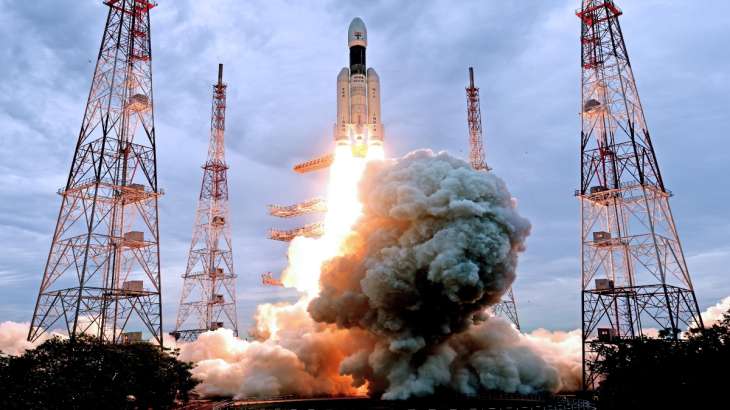
History in the making: The Indian Space Research Organization (ISRO) created history on Friday (July 14) with the launch of the third edition of India’s moon mission Chandrayaan-3 from the Satish Dhawan Space Center in Sriharikota, Andhra Pradesh at 2.35 pm.
Chandrayaan-3 is the third lunar exploration mission in the fourth operational mission (M4) of the LVM3 launcher, formerly the GSLVMkIII rocket.
The LVM3-M4 rocket, the largest and heaviest in its class and described as a ‘fat boy’, lifted off in a picturesque manner at the scheduled time of 2.35 pm from the second launch pad, at the end of the 25.30-hour countdown flew by.
Chandrayaan-3 is a follow-up mission to the second lunar mission, ISRO is aiming for a soft landing on the lunar surface. Success in this regard would make India the fourth country to achieve this feat after the United States, China and the erstwhile USSR.
In 2019, Chandrayaan-2 failed to achieve the much-awaited soft landing on the Moon’s surface, leaving the ISRO team disappointed.
- The average distance of the Moon from the Earth is about 384,400 km, so it will take Chandrayaan-3 approximately more than a month to reach the Moon’s surface.
- The Vikram lander is expected to soft-land on the south pole region of Earth’s only satellite on August 23 or 24, after which it will operate for one lunar day. One lunar day on the Moon is equal to about 14 days on Earth. Chandrayaan-3, which is a follow-up mission after the crash landing of Chandrayaan-2 due to a software glitch in September 2019, includes several improvements. Keeping in mind the past experience, the scientists implemented several changes for successful landing.
- Chandrayaan-3 was launched into space by Launch Vehicle Mark-III (LVM-III), formerly known as GSLV-III (Geosynchronous Satellite Launch Vehicle Mark-III). It was also used to launch Chandrayaan-2.
- The Chandrayaan-3 spacecraft carries a number of technologies with a total payload mass of approximately 3,895 kg. Technologies include laser and RF-based altimeters, velometers, throttleable liquid engines, hazard detection and avoidance systems, and a landing leg mechanism. Taking special measures, ISRO has improved the onboard equipment to avoid any problems during the soft landing on the Moon. Several changes have been made to the lander to be able to handle the higher landing velocity.
- ISRO chief S Somnath said that the landing area has been increased from 500 m x 500 m by 2.5 km to four km. “It can land anywhere, so it doesn’t limit you to targeting a specific point. It will only target a specific point in nominal conditions. So, if the performance is bad, it could land anywhere in that area,” he said.
- Former ISRO scientist Nambi Narayanan said on Thursday that the successful landing of Chandrayaan-3 will make India the fourth country to achieve this feat, which will increase the possibilities of development of space science in the country.
Wishes pour in after Chandrayaan-3 launch
President Draupadi Murmu tweeted, “India successfully launches Chandrayaan-3, another important milestone in space exploration. Hearty congratulations to @ISRO team and everyone who worked tirelessly to achieve this feat! It shows the country’s unwavering commitment towards progress in space science and technology. My best wishes for the success of the lunar mission.”
Prime Minister Narendra Modi described the achievement as “testimony to the tireless dedication of our scientists”.
“Chandrayaan-3 has written a new chapter in India’s space journey. It soars high lifting the dreams and ambitions of every Indian. This significant achievement is a testimony to the tireless dedication of our scientists. I salute his spirit and ingenuity!” PM Modi tweeted.
(with inputs from agencies)
Read this also | Chandrayaan-3 wrote a new chapter in India’s space journey: PM Modi
Read this also | Chandrayaan 3 launch: Akshay Kumar, Anupam Kher, others hail ISRO